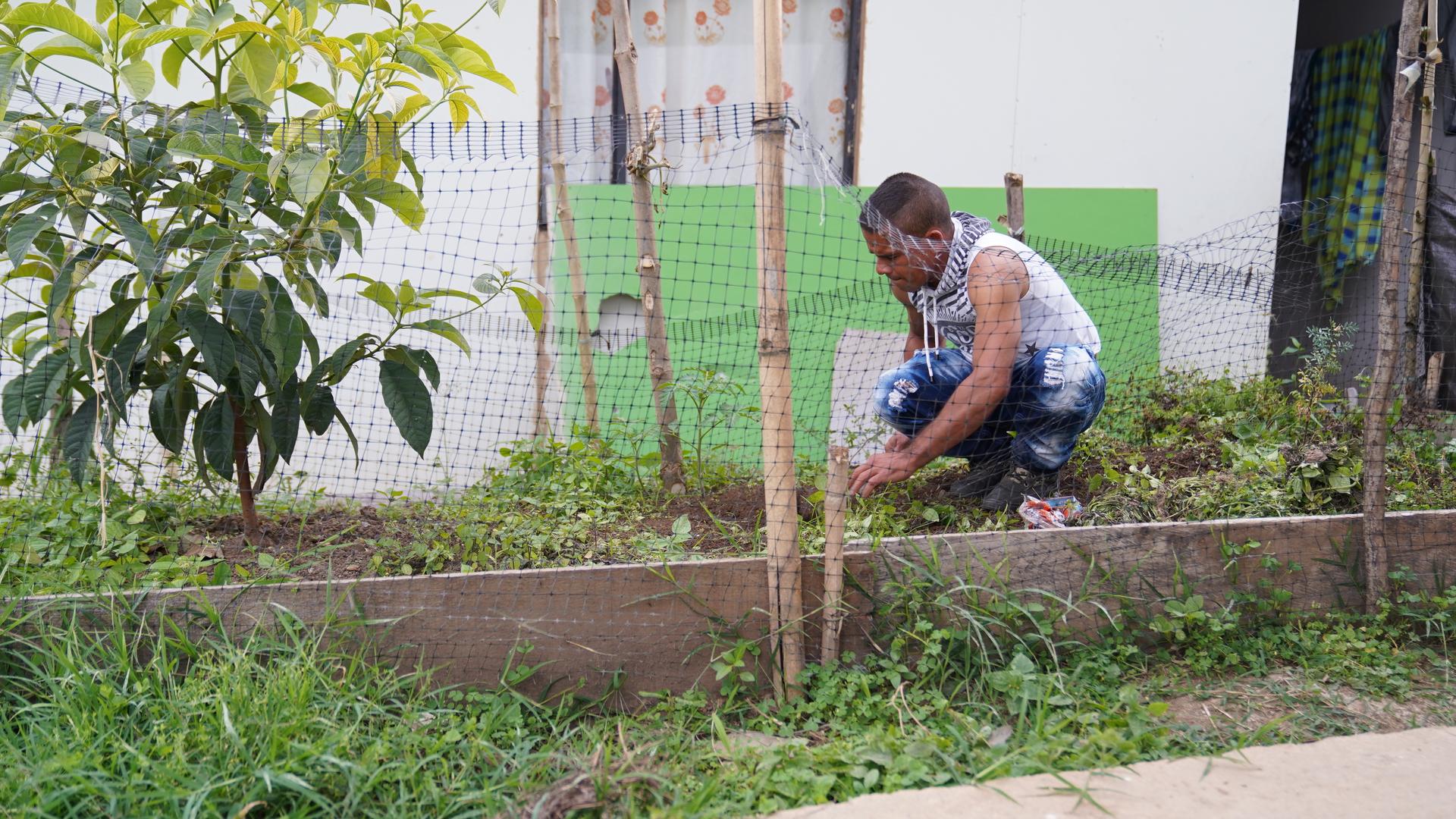Despite the peace deal, former FARC fighters face a new war in rural Colombia
A former fighter works on his small garden at the Monterredondo transition village in Cauca, Colombia, on Wednesday, July 10. Former fighters living here say they want to have access to land, so that they can plant crops and become financially independent.
After nearly two decades as a guerrilla fighter, Luis Carlos Yunda gave up his weapons in 2016, along with thousands of FARC fighters who made peace with the Colombian government.
With the help of a government stipend, Yunda began to rebuild his life, leasing a small plot of land where he planted pineapples and starting a family with a young woman he fell in love with during the final months of the war.

But Yunda’s transformation ended tragically last week, Tuesday, July 9, when gunmen shot him dead on his farm. The next day, family and friends mourned his body at a small “transition” village in Monterredondo, Colombia, home to Yunda and about 30 former FARC fighters and their families. After former rebels turned their guns in two years ago, the Colombian government gave them modest homes in “transitional spaces” with the intent to rebuild their lives.
Yet, murders of former FARC fighters happen almost every week, revealing cracks in the peace deal once hailed as a global example by the United Nations. Its implementation has come across several obstacles, including securing jobs for former rebels and ensuring that top guerrilla and military commanders are held responsible for war crimes at a special peace tribunal.
On Wednesday, some of Yunda’s family and comrades wept uncontrollably over his wooden coffin. “The peace deal took his life away,” Yunda’s widow, Mónica Campos, said tearfully. “It took his chance to see his children grow up and prosper.”
According to the United Nations, more than 120 former FARC fighters have been killed in Colombia since the guerrillas signed the historic 2016 peace deal with the government that ended 50 years of internal conflict.
“The killings are something that worries all of the parties involved” in the peace deal, said UN Security Council President Gustavo Meza during a visit to Colombia last weekend. “It is a complicated situation as there is no one reason that explains all these deaths.”
Related: Colombian women raped during civil war want justice for their kids
The killings have occurred mostly in remote areas where investigations are slow to get underway due to a shortage of detectives and forensic researchers.
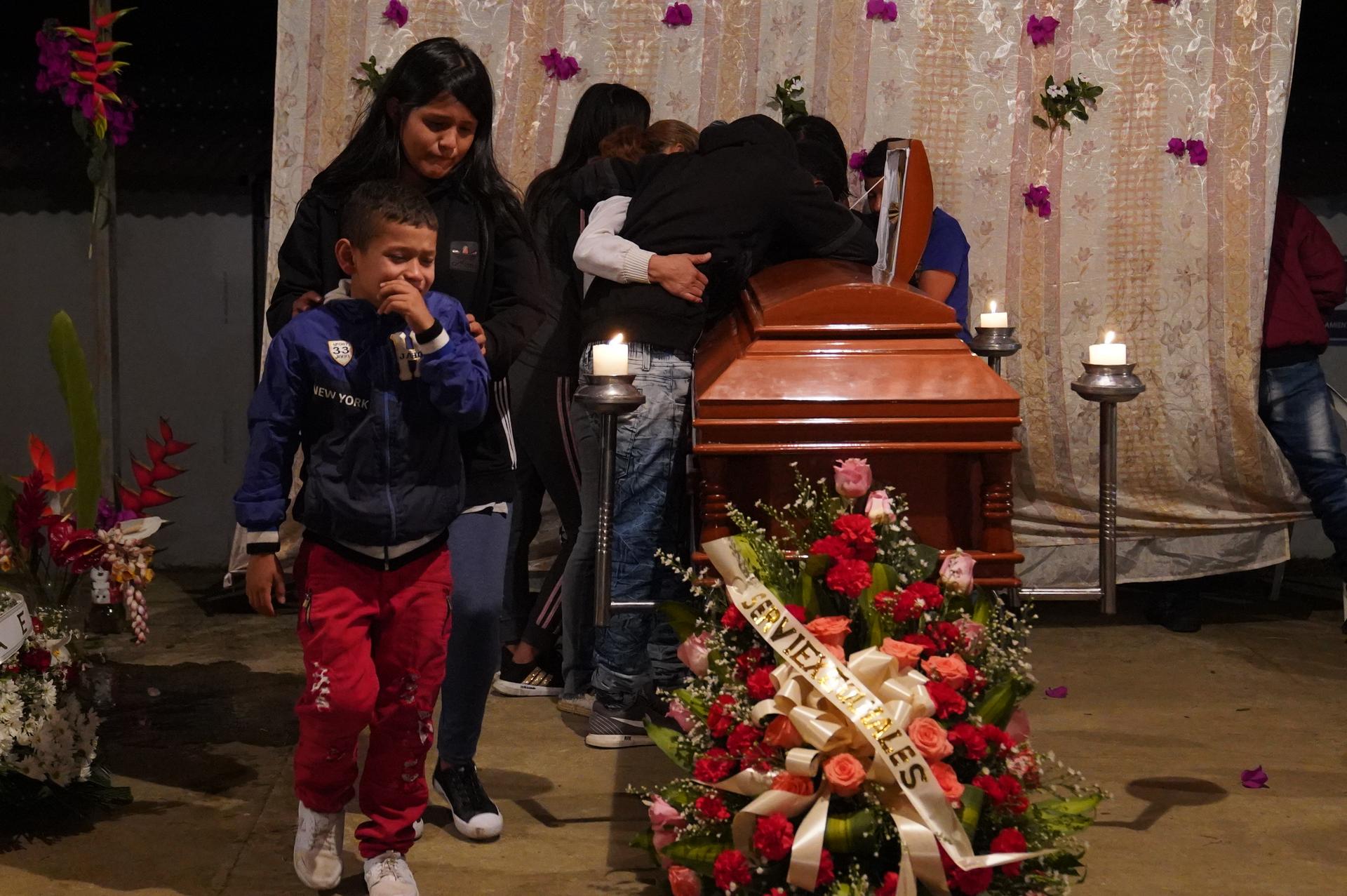
But security analysts say that the murders of former fighters take place as criminal groups move into areas previously under FARC control. These groups are taking over illegal businesses, like cocaine smuggling routes, that the FARC used to run, and threatening those who oppose their plans.
More than 200 community leaders involved in projects like land restitution and the replacement of coca crops for legal crops have also been killed in rural areas since the peace deal was signed.
Diego Restrepo, a Colombian researcher who focuses on post-conflict security, says that some rebels are being murdered in revenge for crimes committed against civilians — or against rival militias — during the war in what he describes as “vendetta” killings.
Other former fighters have been killed because of their involvement with social projects that go against the interests of criminal organizations.
Related: Social activists risk their lives as Colombia’s peace process falters
“More decisive action needs to be taken to dismantle these criminal groups that sometimes originated from right-wing death squads.”
“More decisive action needs to be taken to dismantle these criminal groups that sometimes originated from right-wing death squads,” Restrepo says, adding that the state’s presence is still “lacking” in many of the areas where former fighters live.
Restrepo’s organization, the Peace and Reconciliation Foundation, has monitored the killings of former rebels by gathering news reports on each murder and interviewing community members who knew the dead. He says former rebels have also been murdered after refusing offers to rearm and join criminal groups like the Gulf Clan and the ELN, a smaller guerrilla group still at war with the government.
According to a special investigation unit set up by the Colombian government to prosecute these crimes, militia groups have been involved in at least 51 murders of former FARC fighters. Prosecutors say that FARC dissidents who refused to be part of the peace deal are frequently involved in these murders.
It is still too early to tell who killed Carlos Yunda. But in his village of Monterredondo, the assassination is undermining faith in the peace deal.
“It makes you think a lot about your future,” said José Acosta, a former fighter who worked with Yunda on a farming coop managed by a group of former rebels. “It just doesn’t feel like we have enough guarantees to work peacefully, or get involved in politics.”
But security is not the only obstacle the former combatants have to deal with as they make their transition into civilian life.
Finding employment and becoming self-sustainable has been a difficult task for former fighters who have spent years in the mountains and lack contacts to get jobs, or the capital required to start new businesses.
Related: Former FARC fighters turn a camp into a tourist attraction
To tackle this issue, Colombia provided rebels with access to skills training programs, as well as a monthly stipend of around $230 a month, or 75% of the national minimum wage.
The government set up 24 transition spaces in rural Colombia, each housing anywhere from 100 to 1,200 former rebels. The idea, says former FARC leader Oscar Echeverri, was for these spaces to work as “productive villages” where former fighters could live with their families, develop businesses and contribute to the development of their regions.
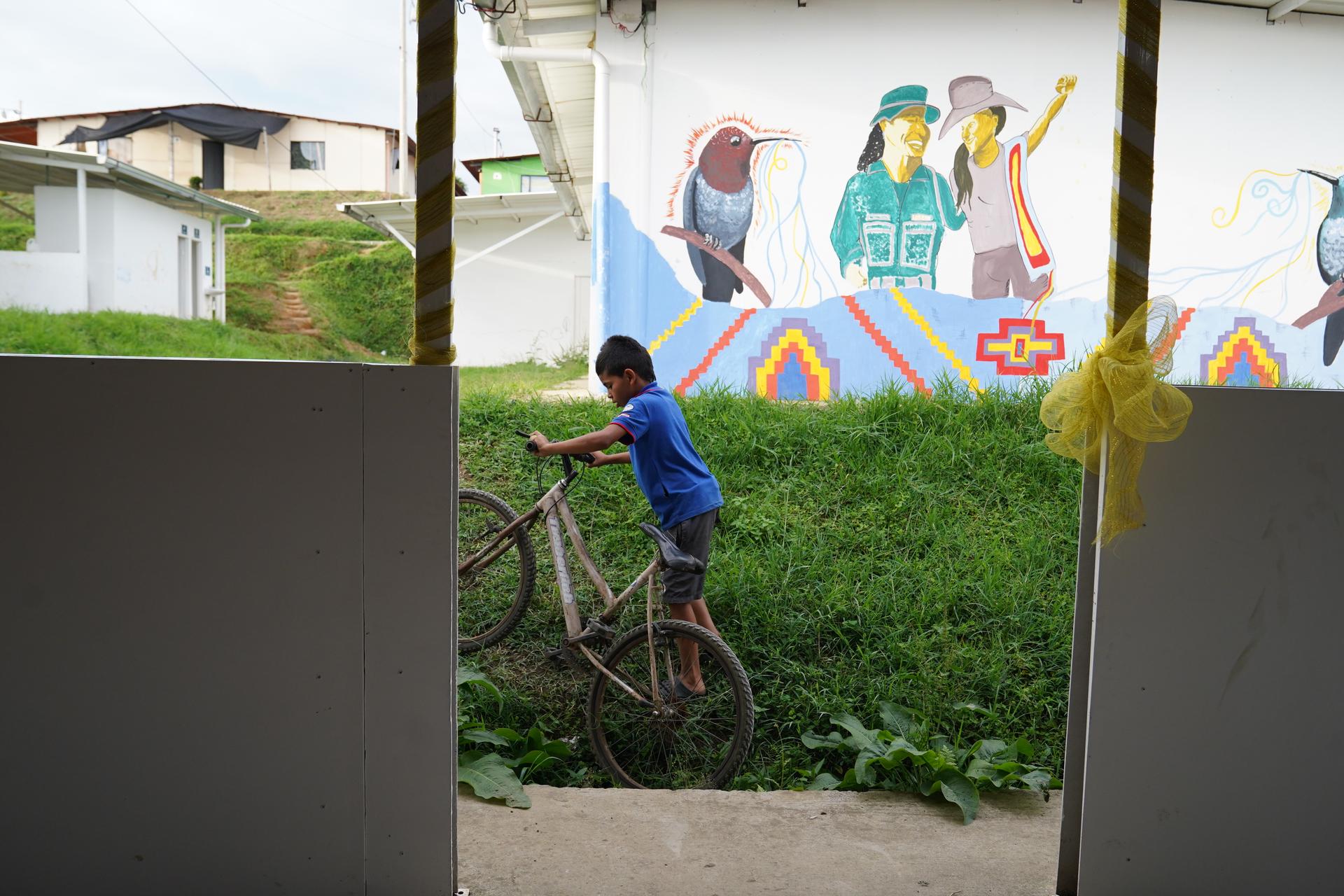
But the peace deal did not outline the way these transition villages would work and two years after they were set up, some are quickly going into decline as former fighters move out in search of better situations and jobs.
The Monterredondo transition space, where Yunda lived with his partner and young daughter, hosted about 200 former rebels in mid-2017, shortly after FARC turned in their weapons. Now, less than 30 former fighters and their families live there. Some of the small houses in the village remain empty and closed off with rusty locks.
Former FARC fighter Manuel Alonso still lives there with his wife, in a two-room home. He has taken lessons in wood sculpting and runs a small workshop where he makes decorative items including a pencil holder that can also keep mobile phones upright. But he says most people are leaving because there are no jobs in the area.
“We need land to work on. … People are going into towns or staying with relatives because here, there isn’t much to do here.”
“We need land to work on,” Alonso says, explaining that the transition village is surrounded by privately owned farms that will not be leased to the FARC fighters. “People are going into towns or staying with relatives because here, there isn’t much to do here,” he explains.
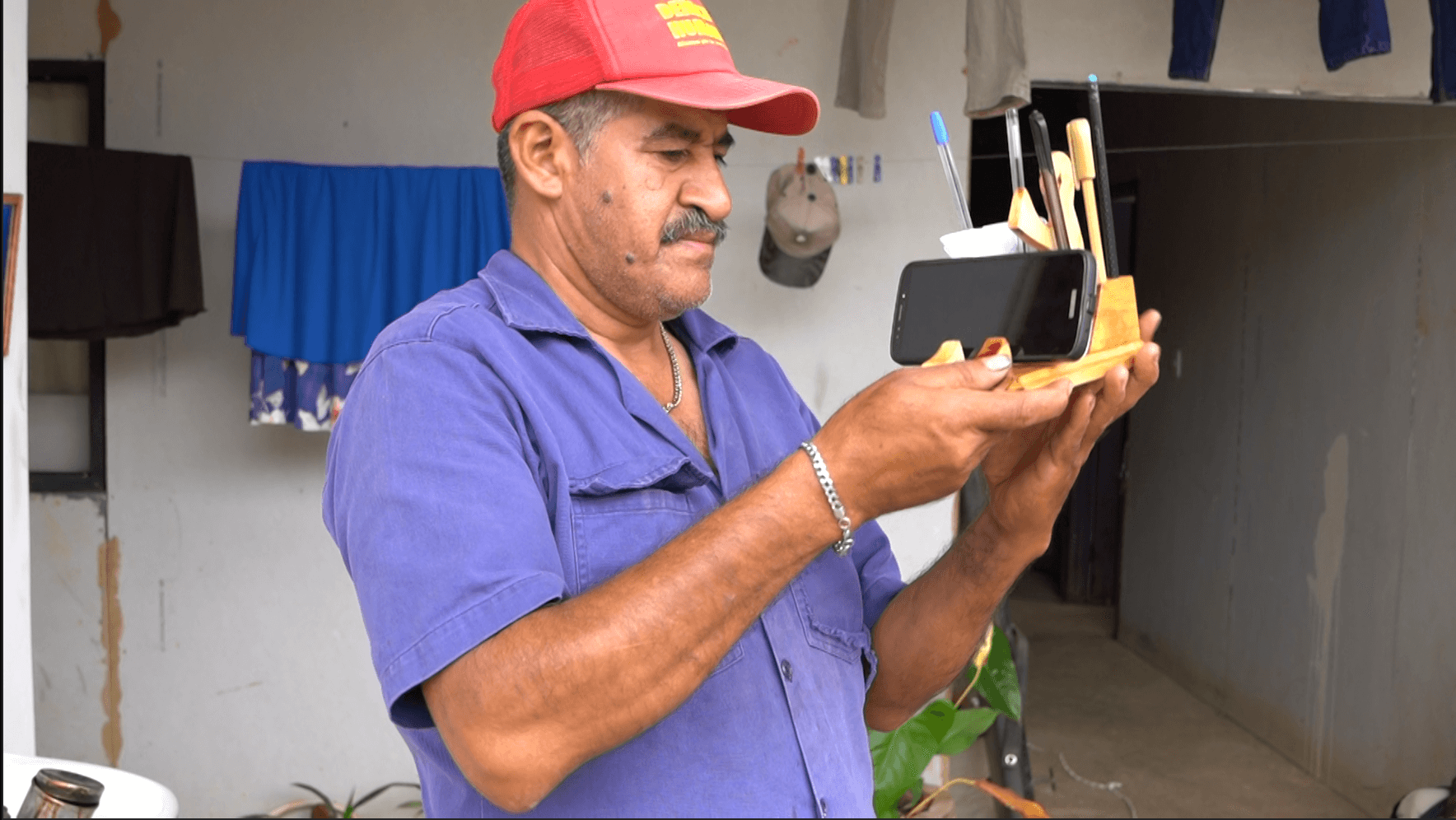
It’s not the only place where former fighters are struggling to get by. A report issued this month by the Ideas for Peace Foundation, a think tank, found that only 10% percent of FARC’s 13,000 former fighters have accessed financing — promised under the peace deal — to start their own businesses.
Harold Martinez, who authored the Ideas for Peace report, says former fighters have struggled to meet government requirements for funds disbursement, including elaboration on business plans that show the sustainability of intended projects.
“The former fighters need more technical support,” Martinez explained. He added that most former guerrillas opt to team up with several former fighters to form new businesses, allowing them to create more ambitious projects by pooling funds, but it also slows down the government approval process.
Related: In post-conflict Colombia, imprisoned ex-combatants help maintain a fragile peace
As government funding slowly makes its way to former fighters, many have tried to develop projects outside transition villages.
Echeverri moved out of the Monterredondo transition village last year and formed a rural cooperative with 30 other former fighters, in part because he had received death threats that made it too dangerous for him to stay at the village.
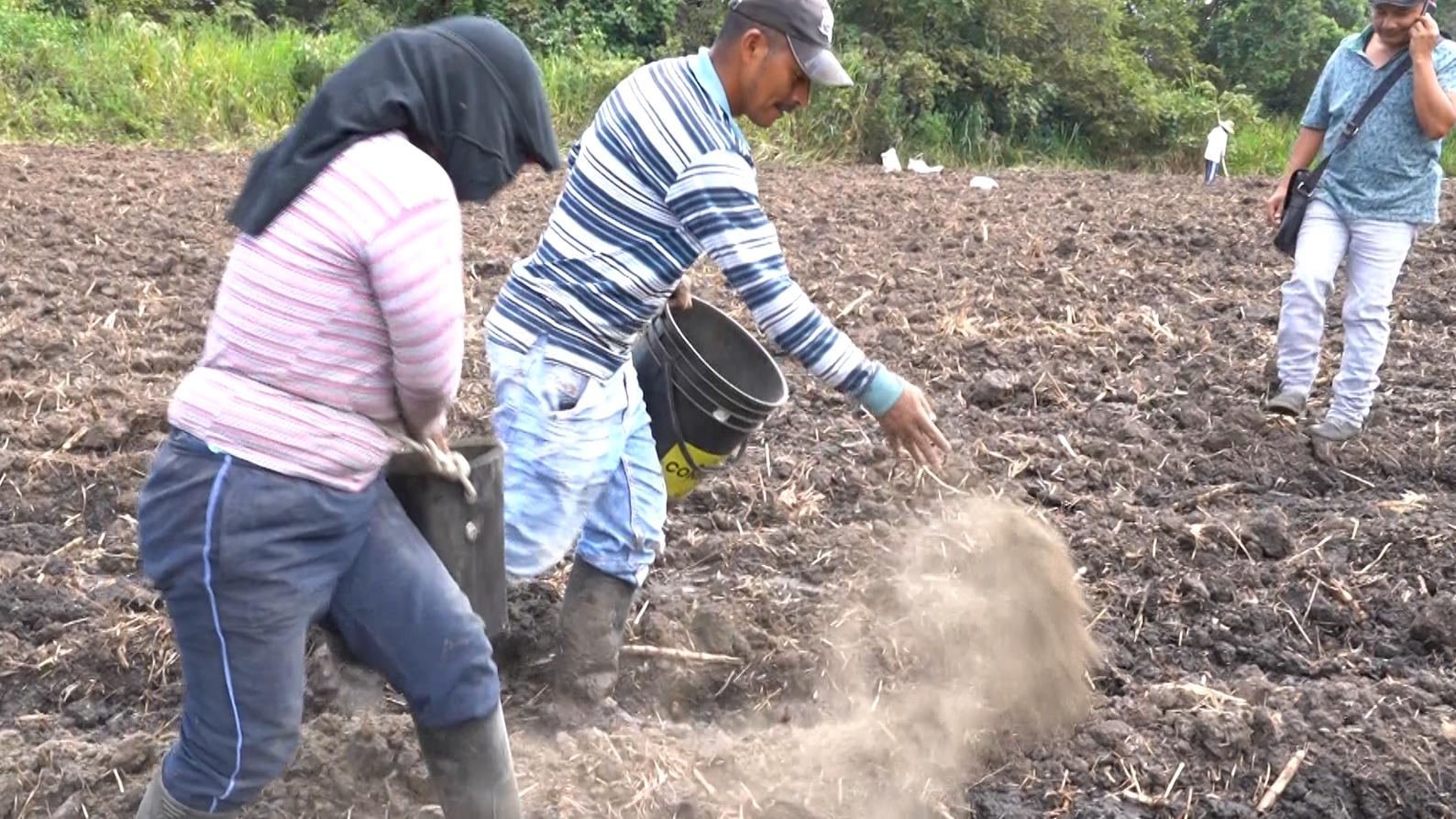
Using money from their monthly government stipend, the former fighters managed to lease 12 acres of land from a local farmers association near the town of Miranda. Then, with the help of a nongovernmental organization, they began to plant peppers and beans and set up a pigsty.
“We haven’t received one peso from the government,” Echeverri says of the farming project. But he says his group of former fighters remains determined to stick with the peace deal despite the modest financing — and security threats.
But not all former fighters share the same view. Dissident FARC groups have grown from 300 troops when the peace deal was signed, to more than 2,000, according to Colombia’s military. Their expansion has been propelled partly by former guerrillas disillusioned with the peace process.
“What worries me is that some of our people will turn to illegal activities to survive. … Some people will get disappointed and follow a different path than the one we’ve taken.”
“What worries me is that some of our people will turn to illegal activities to survive,” says Echeverri, who is still known among his comrades by his nom de guerre, Carlos Antonio. “Some people will get disappointed and follow a different path than the one we’ve taken.”
